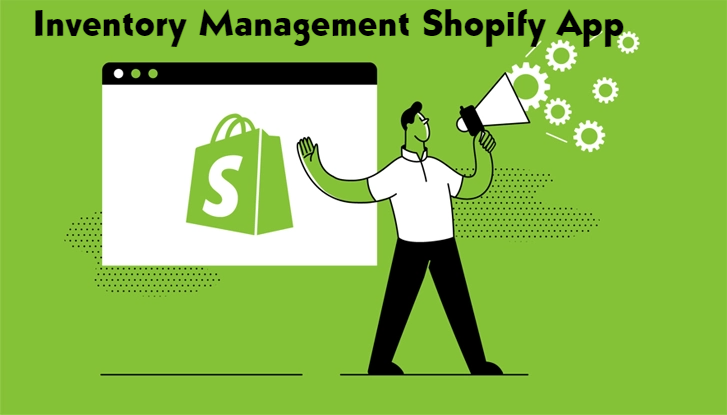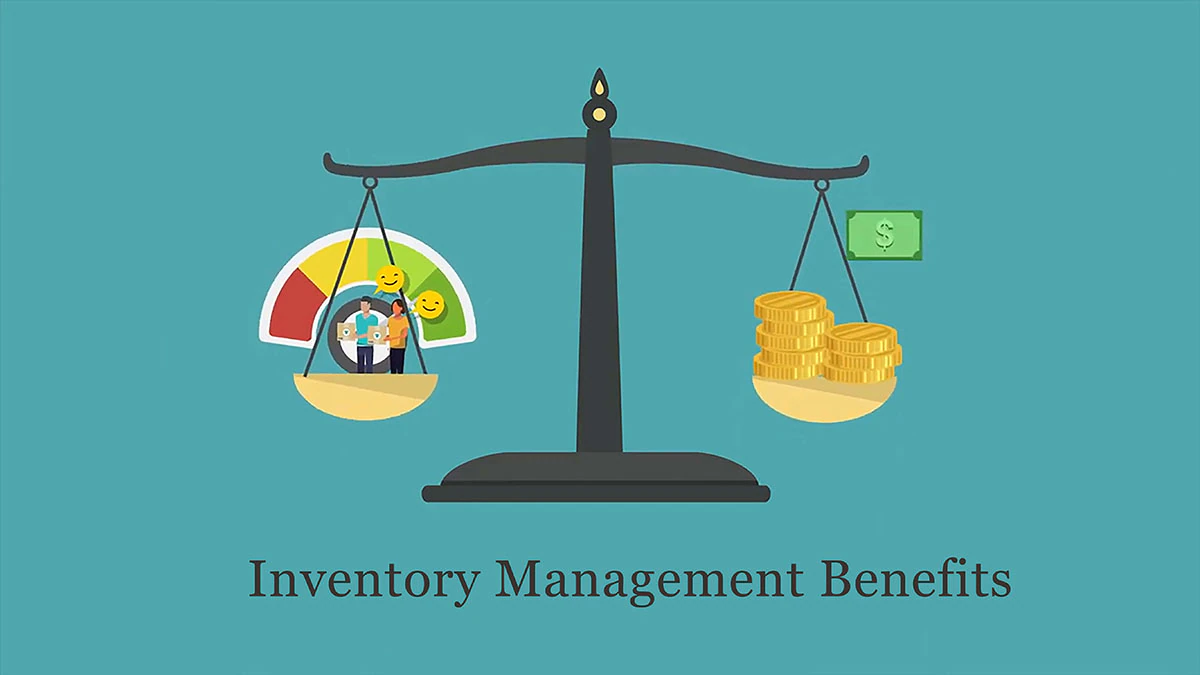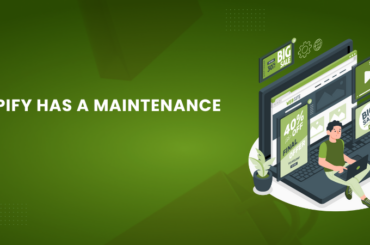Inventory management Shopify App: How to streamline your inventory management?
Last Updated | January 16, 2024
Table of Contents
An Overview: Inventory management Shopify App
You’re a busy entrepreneur running an eCommerce company, and finding the finest inventory management applications to help you optimize your Shopify store takes time. So we, the top Shopify website design services at Folio3, took the liberty of completing the effort for you.
High-quality Shopify app development can help you manage your store’s Shopify sync inventory more efficiently.
We selected the top Shopify custom app for inventory management on Shopify based on the app store rating, the number of reviews, the app’s top features, and other subjective characteristics. We hope that this information will aid you in your search for the finest Shopify inventory management solution for your store.
If it does not, you can always hire Shopify development company, such as ourselves. We have already covered the following topics ‘How Much Inventory Should I Start With An Online Store On Shopify?’ and ‘How to sell on Shopify without Inventory?’ Click on the links to learn more about them and thank us later.
Folio3 is one of the leading Shopify website development services around the world. We offer our best experts to our when they want to hire Shopify developers for Shopify ERP Integration Solutions.
What Is Inventory Management And What Are The Benefits Of Using An App For This Purpose?
Inventory management aids businesses in determining which goods to order and when to order them. It keeps track of merchandise from purchase to sale. The practice monitors and reacts to trends to guarantee that there is always sufficient stock to satisfy client orders and that shortages are detected early.
Inventory becomes revenue if it is sold. Inventory ties up cash before it sells, even though it is recorded as a statement of financial position. As a result, having too much inventory costs money and lowers cash flow.
Inventory turnover is one indicator of good inventory management. Inventory turnover is an accounting metric that shows how frequently stock is sold over time.
A company does not want to have more inventory than it can sell. Deadstock, or unsold inventory, can result from low inventory turnover.
Read Also Shopify Inventory Management
Importance Of Inventory Management
Inventory management is critical to a business’s success since it ensures that there are never too much or too few goods on hand, reducing the danger of stockouts and erroneous records.
Inventory tracking is required by the Securities and Exchange Commission (SEC) and the Sarbanes-Oxley (SOX) Act for public corporations. To demonstrate compliance, businesses must document their management practices.
-
Benefits of Inventory Management
The two main benefits of inventory management are that it ensures you’re able to fulfill incoming or open orders and raises profits.
-
Saves Money
Understanding stock trends allows you to see how much and also where they have something in stock, allowing you to make better use of it.
This even helps to hold lesser stock at every facility (store, warehouse), because you can fulfil orders from anywhere – all of this lowers inventory costs and reduces the quantity of product that remains unsold before it becomes outdated.
Read Also Advanced Shopify Shipping Apps
-
Improvement In Cash Flow
You spend money on merchandise that sells when you use proper inventory management, so money is always flowing through the business.
-
Customers Satisfaction
Providing clients with the things they desire is one aspect of building loyal customers.
How Does The Inventory Management Shopify App Work?
The quantity of a product that is available for sale is referred to as inventory.
Inventory management can assist you to avoid selling out-of-stock items and alert you when you need to purchase or manufacture more of your product.
In Shopify’s Inventory section, you may establish inventory tracking, see your inventory, and alter your inventory levels. For products and permutations where stock is tracked by Shopify, you can also see the chronology of inventory modifications.
In Shopify’s Inventory Reports area, you may examine changes in inventory levels.
Read Also Convert Shopify Store To Mobile App
The Features Of This App That Make It A Valuable Tool For Business Owners
The following are the reasons why inventory management apps are becoming a must-have for eCommerce Stores and raising the bar for the value of the tool for all the online business owners.
Centralized Inventory Management
One of the most significant features of an inventory management system would be that it keeps track of all inventory information. An inventory management system efficiently keeps track of stock levels, product history, and a variety of other product attributes.
Read Also How Much Does It Cost To Build A Shopify App
One of the best characteristics of inventory management system software would be that it integrates with other inventory system modules. This aids in the accurate functioning of the inventory system.
Read Also How to sell on Shopify without Inventory
The use of a centralized inventory management system boosts team productivity and communication. As a result, team members from various locations can communicate and collaborate.
ConnectPOS’ Multi-Source Inventory management system automates your inventory management process across various warehouses and makes stock-taking a breeze!
-
Tagging and Barcoding
The reduction of common human errors is another fantastic advantage of the inventory management system. Manual data entry can lead to mistakes while detecting the barcodes saves workers a lot of time.
Worker training exercises and budget value are reduced thanks to the barcoding feature. Traditionally, recording product data has taken a lot of time and effort. Barcoding and tagging functionalities in the inventory management system have made it easier. The most time-consuming tasks are now accomplished in the shortest time possible.
As a result, inventory management system software allows you to track things efficiently using tagging and barcoding.
-
Business Activity Reporting
The monitoring of daily business activities is one of the most useful features of an inventory management system.
People in charge of an inventory business must be informed about business operations such as the driver’s whereabouts, the condition of the item, information about the order’s shipment, and so on.
Many technologies can be integrated into the inventory management app to make task reporting more efficient.
Read Also Building a Shopify App
-
Inventory Forecasting
When a company’s items run out of stock, it’s an unpleasant circumstance. An inventory management system helps to keep track of which products are running out of stock and which are plentiful in the company’s inventory.
This is a one-of-a-kind method of ensuring a positive user experience while also conserving resources. As a result, business owners make informed decisions when purchasing merchandise.
This element of the inventory management system assists managers in achieving customer expectations and minimizing the danger of stockouts.
-
Low Stock Alert
No matter what type of business you have, appropriate inventory backup and security are essential for the inventory to run properly. Hacking is impossible with inventory management software since it has strong security levels.
If inventory software is compromised, the data is backed up and accessible to business owners. As a result, inventory backup and security prevent any disruptions.
-
IoT Driven and Cloud-Based Software
The inventory management software is cloud-based and accessible from a variety of devices.
In addition, inventory management system software is IoT-driven, making it easier to effectively and smartly capture all of the inventory’s details. The Internet of Things (IoT) helps to keep inventory organized and optimized. All of the company’s employees can obtain real-time updates.
-
Easy Integration With Other Systems
Companies nowadays have implemented an ERP system, which has enhanced their productivity to a larger extent. If inventory management software can be connected with ERP, the organization will reap significant benefits.
The system’s information can be collected indefinitely.
-
Optimized inventory
Another excellent aspect of inventory management software is that it optimizes and organizes a company’s inventory. The improved inventory makes it easier for administrators to operate and achieve deadlines.
-
Manages Demand And Supply
Inventories software helps business owners keep track of their inventory. Managers effectively balance the demand for and supply of corporate items. That’s why businesses can generate enormous amounts of revenue every year.
How To Set Up And Use The Inventory Management Shopify App For Your Business With 5 Easy Steps
-
Step # 1 Identification Of The Data
First, we choose which master screens we’ll use to enter data throughout the process. The master views for the inventory app are as follows:
- Warehouse: The specifics of the several warehouses that you possess.
- Sites: A digital map of each warehouse’s possible locations. You can create isles, shelves, or any other form of storage you like.
- Products: The specifics and features of your objects, materials, and finished goods.
- Suppliers: This is a list of approved vendors. You can also make a link between which things you get from certain vendors.
- Purchase Requests: This is the database for all of your purchase requisitions to all of your suppliers.
- Bills: Keep records of all the money you owe to your vendors.
-
Step # 2 Managing The Warehouse and Locations
The warehouse subsystem is a digital representation of your real storage facility. Begin constructing your warehouses so that you can manage them effectively. Afterward, when, you can specify the areas where you want to store your stuff.
-
Step # 3 The Products and The Vendors
Begin entering your things into the database, or upload them immediately if you do have them in Excel.
In only a few clicks, you may assign your things to their respective locations and warehouses. The app will keep records of your current stock and alert you when you’re running low on anything you need to restock.
Make profiles for your vendors and link them to their products. You would categorize the items as per the provider while creating purchase orders to increase accessibility.
-
Step # 4 Restocking Management
You’ll need to send a proforma invoice to your suppliers to refill your inventory. To do so, the customer will send a purchase request that includes all of the necessary information as well as a list of the items and quantities requested.
Folio3 uses the documentation generator engine to create a purchase order after the request is received. Then, using the design for the business, save it as an attachment. Later, you can send it to the vendor as an email.
Your quality control executive would examine the items after they arrive following the order. They may either approve the purchase and restock the inventory automatically, or they could reject it and return it if it’s defective.
-
Step # 5 Automated Inventory Reduction
The automated system will subtract items from inventory and revise the cost estimate with each sale of a product.
We created a system to keep track of each item’s stock level. The app will inform the marketing team to begin buying the selected items once it crosses the threshold level. You may keep records of stocks this way.
The same procedure applies if your company has a return policy. When a customer returns the product, it updates the stock, and the staff inspects the quality.
We hope that this article has helped you a lot with the Inventory management Shopify App. If you are someone willing to commit a migration from another eCommerce platform Folio3 will be glad to offer the best Shopify migration services for your business. Our experts know the top Shopify custom development techniques there are in the marketplace.
FAQs About Inventory management Shopify App:
List the best inventory management app Shopify in 2022?
Here is an extensive list of the best inventory management apps for Shopify integration services;
- Katana Manufacturing ERP
- Back in Stock + Restock Alerts by Restock Rocket
- Stock Sync – Qty update by SKU
- QuickBooks Commerce
- Stocky
- Syncio Multi Store Sync
- Skubana
- Inventory Planner
- SKULabs
- Stock&Buy
- Connected Inventory
- SyncLogic
- SimpleSync
- Storage Synchronizer
- Quick Scan
- Shopventory
- Multi-Store Sync Power
- StockSavvy
- Veeqo Inventory & Shipping
- Realtime Stock Sync & Bundling
- Bulk Product Edit & CSV import
- Back in Stock & Restock Alerts
- Back in Stock – Out of Stock
- Etsy Marketplace Integration
- Back In Stock: Restock Alerts
- Suite For Google Shopping Feed
- App for Google Shopping Feed
- Codisto Amazon, eBay & Walmart
- Back In Stock: Customer Alerts
- Etsy Integration Inventory
- Pre-Order Now – Preorder
- Realtime Stock Sync & Bundling
- SUPLIFUL on-demand supplements
- Integration for eBay
- EasyScan: SKU and Barcode
- Advanced Custom Reports
- Stock Sync – Inventory Update
- Walmart Integration
- Free Traffic & Organic Reach
- QuickBooks Sync
- Amazon Integration Plus
- Bundles.app | Bundle Products
- Multichannel Importer
- Stockie Low Stock Alert
- Simple Purchase Orders
How do I add inventory to my Shopify App?
The Products page in the Shopify admin will help you add the products, you may add information about the product, such as its pricing, variations, and availability.
You can use meta fields to add customized fields to the product pages if you wish to save specialized information or documents for your products. If you already have an Online Store 2.0 theme, you can use the theme editor to add references to the product meta fields.
The process couldn’t get any simpler than this;
- In the Shopify app, go to Products > All products.
- Tap the + button on the Products screen
- Add the title and other details for your new product.
- Click the check mark and save your new product.












